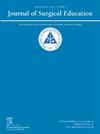Cultivating Rural Surgeons: An Analysis of the Current Rural Surgery Graduate Medical Education Landscape and a Roadmap to Program Creation
IF 2.6
3区 医学
Q1 EDUCATION, SCIENTIFIC DISCIPLINES
引用次数: 0
Abstract
Objective
The purpose of the study is to provide current data on the composition and prevalence of rural general surgery residency programs and describe new mechanisms and resources facilitating the creation of such programs.
Design
Training site and program data for general surgery residencies for the academic year 2022 to 2023 from the Accreditation Council for Graduate Medical Education (ACGME) were geocoded and analyzed. A literature search and iterative consensus process with graduate medical education (GME) experts was used to synthesize and describe new mechanisms and resources to grow rural general surgery training.
Setting
Programs were designated as either having a rural rotation or the majority of training in a rural location (i.e. greater than 50% of training). Two definitions of rural were incorporated: nonmetropolitan Core-Based Statistical Area (CBSA) counties and Federal Office of Rural Health Policy area (FORHP) rural counties or census tracts.
Participants
All listed general surgery residency programs reporting data to the ACGME.
Results
Less than 2% of ACGME-accredited general surgery programs spend the majority of their training in rural areas. Nearly 10% (n = 36) of programs have training sites in nonmetropolitan counties, and 13.30% (n = 48) of programs have sites in FORHP rural areas. Recent changes to GME funding policies and regulations have opened opportunities to expand rural GME programs. For example, existing residencies that increase their complement and establish a new rural site are eligible for Medicare GME funding.
Conclusions
Despite new funding opportunities for rural GME, program development remains low among existing or new general surgery programs. Rural general surgery residency training could play an important role in addressing current and future general surgeon workforce shortages. Recent state and federal financing and assistance can be accessed to bolster rural rotations and residencies.
培养农村外科医生:当前农村外科研究生医学教育现状分析及项目创建路线图
目的:本研究旨在提供农村普外科住院医师项目构成和流行情况的当前数据,并描述促进此类项目创建的新机制和资源。设计对研究生医学教育认证委员会(ACGME)提供的2022 - 2023学年普外科住院医师的培训地点和项目数据进行地理编码和分析。通过文献检索和与研究生医学教育专家的迭代共识过程,综合描述农村普外科培训的新机制和资源。设置项目被指定为农村轮转或大部分培训在农村地区进行(即超过50%的培训)。农村纳入了两种定义:非大都市核心统计区(CBSA)县和联邦农村卫生政策办公室(FORHP)农村县或人口普查区。所有参与者都列出了向ACGME报告数据的普通外科住院医师项目。结果:在acgme认可的普通外科项目中,只有不到2%的项目将大部分培训时间花在农村地区。近10% (n = 36)的项目在非大都市县设有培训地点,13.30% (n = 48)的项目在FORHP农村地区设有培训地点。最近对中小企业资助政策和法规的修改为扩大农村中小企业项目提供了机会。例如,现有的居民增加他们的补充和建立一个新的农村站点有资格获得医疗保险企业资助。结论尽管农村GME有新的资助机会,但在现有或新的普外科项目中,项目发展仍然很低。农村普外科住院医师培训可以在解决当前和未来的普外科医生劳动力短缺方面发挥重要作用。最近的州和联邦资金和援助可以用于支持农村轮岗和居民。
本文章由计算机程序翻译,如有差异,请以英文原文为准。
求助全文
约1分钟内获得全文
求助全文
来源期刊

Journal of Surgical Education
EDUCATION, SCIENTIFIC DISCIPLINES-SURGERY
CiteScore
5.60
自引率
10.30%
发文量
261
审稿时长
48 days
期刊介绍:
The Journal of Surgical Education (JSE) is dedicated to advancing the field of surgical education through original research. The journal publishes research articles in all surgical disciplines on topics relative to the education of surgical students, residents, and fellows, as well as practicing surgeons. Our readers look to JSE for timely, innovative research findings from the international surgical education community. As the official journal of the Association of Program Directors in Surgery (APDS), JSE publishes the proceedings of the annual APDS meeting held during Surgery Education Week.
 求助内容:
求助内容: 应助结果提醒方式:
应助结果提醒方式:


